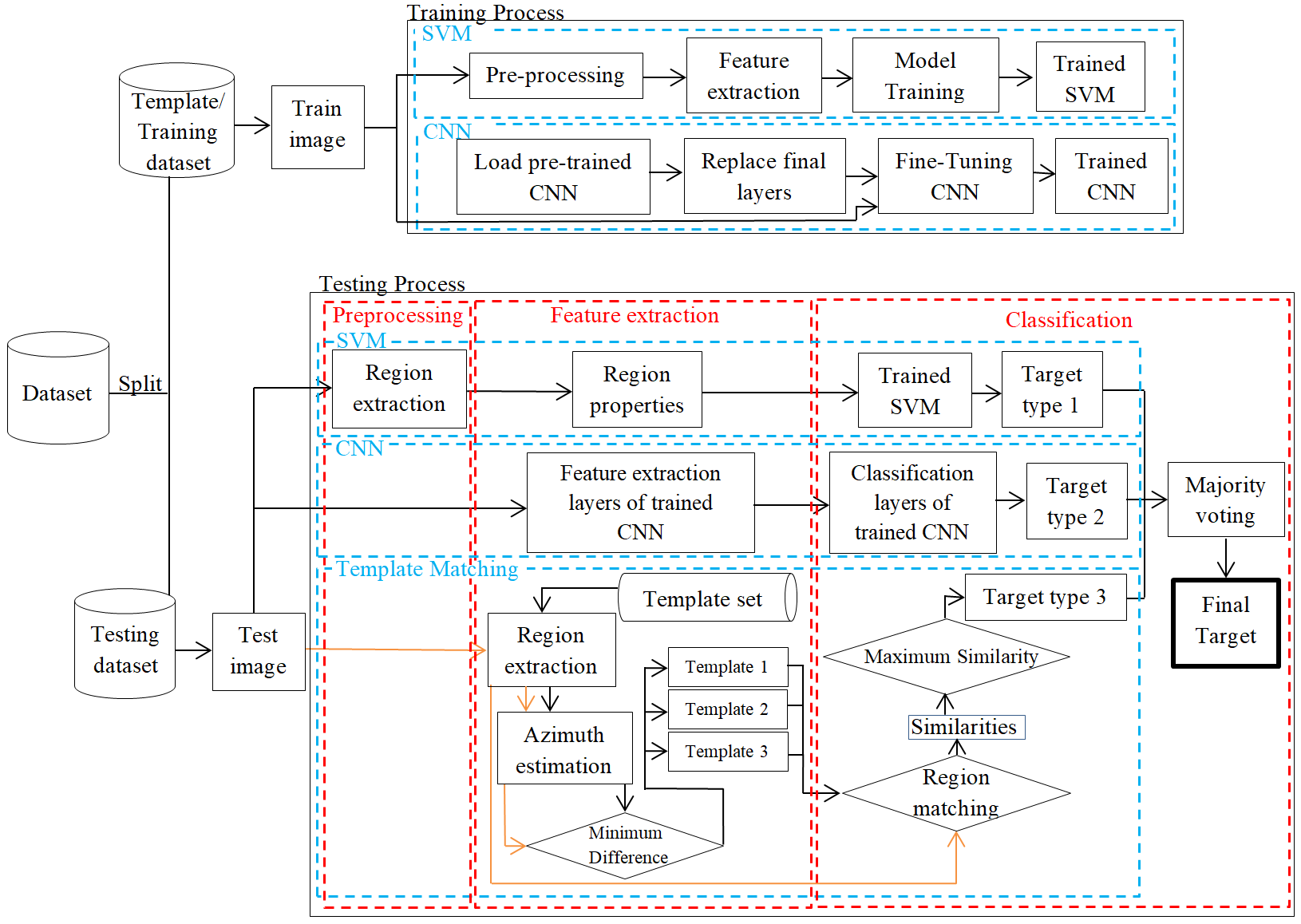Abstract
This paper presents an ensemble approach for Synthetic Aperture Radar (SAR) Automatic Target Recognition (ATR) that integrates AlexNet, Support Vector Machine (SVM), and template matching through majority voting to improve classification accuracy under various operating conditions. The study utilizes the MSTAR dataset, focusing on both Standard Operating Conditions (SOC) and Extended Operating Conditions (EOC). The methodology begins with SAR image preprocessing, applying threshold segmentation with histogram equalization and morphological filtering to extract target regions. These regions undergo feature extraction, with AlexNet and SVM separately classifying the targets, while template matching identifies test images by comparing binary target regions with template images. Experimental results demonstrate AlexNet's superior classification under SOC and EOC-1, though template matching showed better performance for specific targets like 2S1 in EOC-1. The AlexNet based approach achieved average accuracies of 90% in SOC and 87% in EOC-1, showing significant improvement over individual techniques. The study concludes that the ensemble technique effectively enhances SAR ATR accuracy and highlights the benefits of improved data preprocessing and feature extraction for classification stages. This research contributes to ongoing advancements in SAR ATR by optimizing classifier performance in challenging conditions and establishing ensemble techniques as a promising direction for robust target recognition.
Keywords
ensemble classifier
synthetic aperture radar (SAR)
automatic target recognition (ATR)
standard operating condition (SOC)
extended operating condition (EOC)
image classification
Funding
This work was supported without any funding.
Cite This Article
APA Style
Rahman, N., Khan, M., & Khan, I. (2024). AlexNet based Ensembel Approach for Synthetic Aperture Radar Target Classification under Different Conditions. IECE Journal of Image Analysis and Processing, 1(1), 6–20. https://doi.org/10.62762/JIAP.2024.927304
Publisher's Note
IECE stays neutral with regard to jurisdictional claims in published maps and institutional affiliations.
Rights and permissions
Institute of Emerging and Computer Engineers (IECE) or its licensor (e.g. a society or other partner) holds exclusive rights to this article under a publishing agreement with the author(s) or other rightsholder(s); author self-archiving of the accepted manuscript version of this article is solely governed by the terms of such publishing agreement and applicable law.


 Submit Manuscript
Edit a Special Issue
Submit Manuscript
Edit a Special Issue

